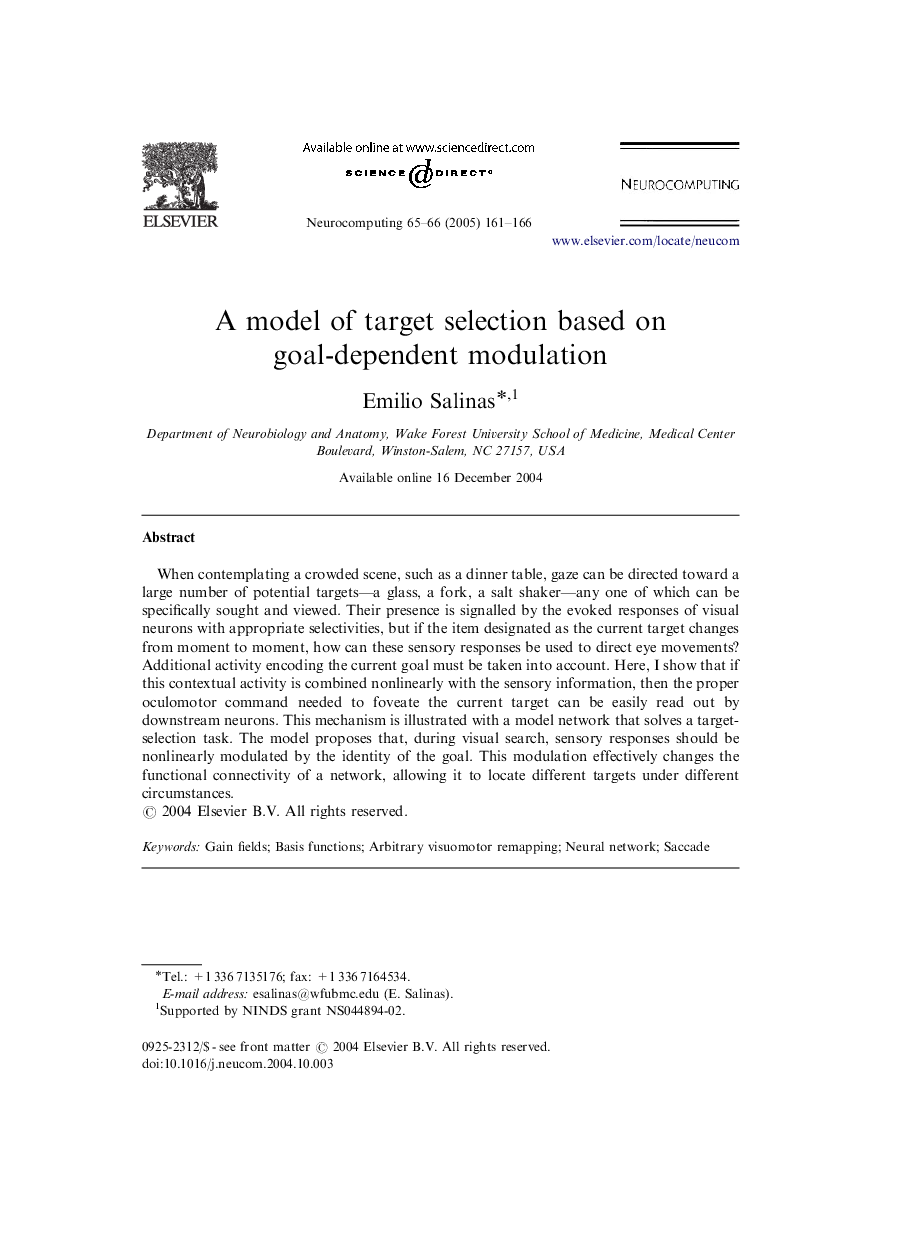| Article ID | Journal | Published Year | Pages | File Type |
|---|---|---|---|---|
| 9653477 | Neurocomputing | 2005 | 6 Pages |
Abstract
When contemplating a crowded scene, such as a dinner table, gaze can be directed toward a large number of potential targets-a glass, a fork, a salt shaker-any one of which can be specifically sought and viewed. Their presence is signalled by the evoked responses of visual neurons with appropriate selectivities, but if the item designated as the current target changes from moment to moment, how can these sensory responses be used to direct eye movements? Additional activity encoding the current goal must be taken into account. Here, I show that if this contextual activity is combined nonlinearly with the sensory information, then the proper oculomotor command needed to foveate the current target can be easily read out by downstream neurons. This mechanism is illustrated with a model network that solves a target-selection task. The model proposes that, during visual search, sensory responses should be nonlinearly modulated by the identity of the goal. This modulation effectively changes the functional connectivity of a network, allowing it to locate different targets under different circumstances.
Keywords
Related Topics
Physical Sciences and Engineering
Computer Science
Artificial Intelligence
Authors
Emilio Salinas,
